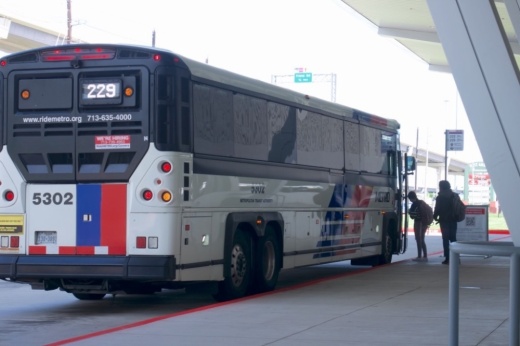The COVID-19 pandemic's effects can still be seen in public transportation ridership from Katy to Houston, according to usage statistics from the Metropolitan Transit Authority of Harris County.
METRO's annual ridership reports show commuter park and ride usage has remained lower than before the pandemic among routes that have stops on the Grand Parkway, Kingsland and Addicks park and rides, with the total ridership on those routes in 2023 being 49.44% of the ridership in 2019.
"It's been a national challenge," said University of Houston architecture professor Bruce Race, who also specializes in urban planning, sustainability and resilience. "Ridership numbers are down everywhere because we work differently. The pandemic just accelerated trends that were already happening."By the numbers
The routes serving the Katy area are the 221 Kingsland Park and Ride, the 222 Grand Parkway Park and Ride, and the 228 Addicks Park and Ride, as well as the 229 Midday circulator and 298 Katy Freeway/Texas Medical Center Park and Ride.
The least impacted routes by the pandemic were what Race calls the "milk run routes," or routes serving the most transit-dependent communities.
From 2019 to 2023, most local commuter routes lost ridership after the pandemic; however, the 298 route only had a 17.49% decline compared to an average decline of 54.33% with other Katy-area routes, according to METRO data.
Zooming out
Park and ride ridership in Katy reflects the trend across Houston, as advocacy group Link Houston's Equity in Transit monthly report shows the average ridership in April for all park and ride routes was 49% of the ridership in April 2020.
UH professor Kailai Wang, who leads the college’s Interdisciplinary Transportation and Society Laboratory, said Houston historically has had a low rate of public transit ridership compared to other large cities in the U.S.
Houston had the second-lowest public transportation ridership rate among the top five most populated metro areas nationally in 2019, according to the Federal Transit Administration's National Transit Database.
Wang said he believes public transportation ridership has had difficulty recovering from the pandemic due to:
- Public health concerns
- A decrease in commuters with increasing popularity of work from home and hybrid work models
- Several Houston-area universities offering more online classes
However, Russo also said METRO officials are optimistic because weekly ridership reached 86% of prepandemic numbers in February—the second highest among the top 20 metro areas in the U.S. Moreover, average inner-city bus weekday ridership rates as of May are near their prepandemic levels, and weekend rates have already exceeded their prepandemic levels, she said.
What's next
In an interview with Houston Public Media, METRO board Chair Elizabeth Brock announced several strategies to increase public awareness and enthusiasm for public transportation, including:
- Redesigning METRO's phone apps to provide a better customer experience and facilitate transit planning
- Having more police presence on buses, trains, and park and ride lots to improve public safety
- Exploring other alternative transportation options, such as rideshare or carpool programs
- Transforming METRO's bus fleet to smaller, all-electric shuttles to make transit more accessible
These initiatives are part of the METRONext Moving Forward Plan, which is funded through bonds and federal grants, and requires no tax increases, according to METRO.
"An electrified public transportation system is a possible way to save energy and make the system more efficient," Wang said. "While we're [in] this process, we can also improve the image of public transit in Houston to the public."




